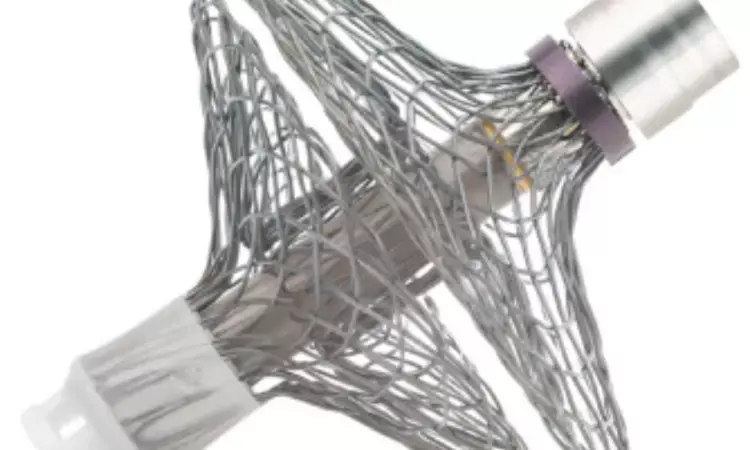- Home
- Medical news & Guidelines
- Anesthesiology
- Cardiology and CTVS
- Critical Care
- Dentistry
- Dermatology
- Diabetes and Endocrinology
- ENT
- Gastroenterology
- Medicine
- Nephrology
- Neurology
- Obstretics-Gynaecology
- Oncology
- Ophthalmology
- Orthopaedics
- Pediatrics-Neonatology
- Psychiatry
- Pulmonology
- Radiology
- Surgery
- Urology
- Laboratory Medicine
- Diet
- Nursing
- Paramedical
- Physiotherapy
- Health news
- Fact Check
- Bone Health Fact Check
- Brain Health Fact Check
- Cancer Related Fact Check
- Child Care Fact Check
- Dental and oral health fact check
- Diabetes and metabolic health fact check
- Diet and Nutrition Fact Check
- Eye and ENT Care Fact Check
- Fitness fact check
- Gut health fact check
- Heart health fact check
- Kidney health fact check
- Medical education fact check
- Men's health fact check
- Respiratory fact check
- Skin and hair care fact check
- Vaccine and Immunization fact check
- Women's health fact check
- AYUSH
- State News
- Andaman and Nicobar Islands
- Andhra Pradesh
- Arunachal Pradesh
- Assam
- Bihar
- Chandigarh
- Chattisgarh
- Dadra and Nagar Haveli
- Daman and Diu
- Delhi
- Goa
- Gujarat
- Haryana
- Himachal Pradesh
- Jammu & Kashmir
- Jharkhand
- Karnataka
- Kerala
- Ladakh
- Lakshadweep
- Madhya Pradesh
- Maharashtra
- Manipur
- Meghalaya
- Mizoram
- Nagaland
- Odisha
- Puducherry
- Punjab
- Rajasthan
- Sikkim
- Tamil Nadu
- Telangana
- Tripura
- Uttar Pradesh
- Uttrakhand
- West Bengal
- Medical Education
- Industry
Does left atrial pressure monitoring improves survival in HFrEF patients?

USA: Monitoring left atrial (LA) pressures in HFrEF (heart failure with reduced ejection fraction) patients can lead to relative mortality reduction at two years as high as 25%, according to findings from a new meta-analysis combining data from the CHAMPION, GUIDE-HF, and LAPTOP-HF trials.
Previous studies have shown that monitoring left atrial pressures directly, or as a proxy of pulmonary artery pressures, keeps LA pressures down and reduces heart failure hospitalizations in HFrEF. Still, it was yet to be discovered if it improves survival.
JoAnn Lindenfeld, Vanderbilt University Medical Center, Nashville, TN, presented the findings from the analysis at the THT (Technology and Heart Failure Therapeutics) 2023 meeting.
The patient-level meta-analysis with over two years of follow-up showed that remote hemodynamic monitoring reduces HF hospitalizations and all-cause mortality in HFrEF patients; consistency was observed across all trials with different periods, different devices, and evolving guideline-directed medical therapy (GDMT).
Both GUIDE-HF and CHAMPION were single-blinded studies of the CardioMEMS pulmonary artery pressure monitor; however, LAPTOP-HF studied a direct LAP (left atrial pressure) monitoring system. LAPTOP-HF was terminated early due to increased adverse events, primarily tied to complications with a transseptal puncture when the trial took place a decade ago. However, the treated patients were followed for a median follow-up of 8.2 months, implying that data was inadequate on outcomes beyond 12 months. Besides, GUIDE-HF got derailed by the COVID-19 pandemic and missed the primary endpoint, although an analysis demonstrated significant benefits of monitoring. Full findings have never been published.
The meta-analysis was focused only on patients with HFrEF, who comprised the majority across the three studies. Seven hundred had one year of follow-up, and 273 had two or more years of follow-up from the 1,350 patients included in the meta-analysis.
Following were the key findings of the meta-analysis:
- Mortality patterns in all three trials appeared to follow a similar pattern, with no differences seen in the first 12 months, followed by a gradual separation of the curves.
- When patient-level data were combined, survival curves continued to diverge. By 24 months, overall mortality was 71.3% in patients randomized to standard management and 80.5% in those actively monitored for pressure changes (HR 0.75).
- An analysis that included only GUIDE-HF patients enrolled and followed up before the COVID-19 lockdowns showed the same results.
Lindenfeld acknowledged the shortcomings of the data but argued they offer an intriguing signal that makes a case for ensuring novel approaches to pressure monitoring now under investigation continue beyond 12 months.
Dr Kamal Kant Kohli-MBBS, DTCD- a chest specialist with more than 30 years of practice and a flair for writing clinical articles, Dr Kamal Kant Kohli joined Medical Dialogues as a Chief Editor of Medical News. Besides writing articles, as an editor, he proofreads and verifies all the medical content published on Medical Dialogues including those coming from journals, studies,medical conferences,guidelines etc. Email: drkohli@medicaldialogues.in. Contact no. 011-43720751


